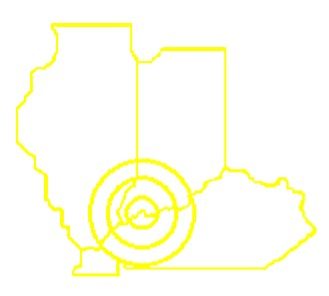
Ever logged in to Ancestry, FamilySearch, or some other genealogy website and headed straight for the censuses? Maybe from there you viewed a couple vital records, a marriage certificate, and then you pulled up Word to start crafting a biography. While censuses, vital records, marriage certificates, wills, and other documents are invaluable, what if I told you there’s another world of research just waiting out there? Documents that can help you discover more about your ancestor, without ever mentioning them by name?
Yes, I’m talking about letters, diaries, newspapers, and any other first-hand account (professionally called a primary source) from the era your ancestor lived in. Let’s look at why primary sources are important.


In so many respects, primary sources paint an overall, big picture of what life was like during your ancestor’s time. By examining primary documents, you get a glimpse into a different world–you’re basically a time traveler! When you read through a letter, pour through a diary, or flip through a newspaper, you’re understanding more about your ancestor’s culture. While the past is in many respects not that different from today’s time–so many basic human emotions remain unchanged–the ideologies and large issues from other eras are sometimes different from ours. That’s why, in my senior capstone seminar for my history degree, we’ve examined how the past is like a foreign country. As historians and family researchers, it’s our job to be the “tour guides” of the past, and what better way to learn about another culture than to fully immerse yourself in it?


I just talked about how the past is a foreign land. But just like how some ideas are universal no matter the culture–a smile can transcend language barriers, a laugh conveys the same happiness across the world–we find by digging through primary sources that we’re also similar to the past. I’ve delved into thousands of primary sources over the past eight years, and if there’s one thing that surprises me, it’s when I find that many of our phrases have existed for hundreds of years.
Edward Rumsey Weir Jr., a Kentucky Civil War captain and later a lawyer, “made a journey to Washington during the dog-days and the excessive heat combined with unusual excitement was too much for [him], and [he had] been ‘laid on the shelf.'” Until reading through this document, written August 1861, I was unaware that this idea of a “dog days of summer” has been in existence over 160 years.
Ever heard the expression, “happy as a hog in slop”? Its origins lie well into the past, too. Reading through letters written by Indiana Civil War veteran, John Truex, I found he adapted the phrase to say his comrade was “as happy as a pet pig in a bucket of slop.”
Not only do we find phrases similar to our own, though, we also find that many of our past times are the same. Otis Moody, an Illinois Civil War soldier, wrote in his diary that he could sit and watch for hours “the varying, shifting clouds so pure & white, as they roll up their fleecy manes against the deep blue sky, constantly taking on some new form & yet so gradually as scarcely to be perceptable [sic].” In Moody’s flowery prose, he tells us that he enjoys watching the clouds and finding different shapes in them.
We can also see that financial issues are not a new issue, as Charley Henry Howe, a Massachusetts Civil War soldier writing from Kentucky, said, “I believe that we shall get two months pay sometimes this month, hope we shall for I am nearly dead broke, but it[’s] growing mighty hot and I believe I shall go in the shade and have a game of Euchre with someone.” Within just a couple of sentences, we can see two things from the 1860s that are still true of our modern culture–Howe faced financial problems and he liked to play games. Of course, if we dig even deeper, we can also see that he liked to play games in the shade, so just like we often do, he was avoiding the scorching sun.
Also, many of the inventions you thought were more “modern” might not necessarily be. Vaccinations, which may seem like a recent advent, are actually historic. In fact, Civil War veteran John L. Hebron wrote, “there is not much sickness as there has been there is no small pox in this camp althoug[h] some of the regt got vacinated [sic].” Although small pox has been largely eradicated, we can see that preventative measures were taken against diseases, even 150+ years ago.


Why did I share so many examples above of primary sources? Because when we’re willing to look beyond censuses, marriage documents, and vital records, we can discover a treasure-trove of information that can help us understand life in past eras.
I know what you’re probably thinking–how will information written from a Massachusetts Civil War soldier help you write a biography on your great-great-great-great aunt from Illinois. By understanding the time in which your aunt lived, studying both the differences and similarities to create an overall big picture of the era, you’re becoming a better researcher. When you stumble across an idea from the 1800s that may seem foreign to you, you can view a primary source to perhaps gain more clarity on the issue. Let’s use an example!
Maybe you’re studying your 5th great grandfather who was a pastor. You’ve seen Christianity through a modern lens, so you begin thinking about a preacher you know. While Christianity at its core is unchanged, the ways that people worship and connect with God has altered somewhat. So by examining primary sources that mention Christianity at the time–from the hymns to the style of preaching–you gain a better understanding of how your ancestor may have delivered sermons. You can also discover that some of the “old hymns” sung in church today aren’t quite as old as you thought and may not have existed in your ancestor’s lifetime. You can then switch gears and explore historic hymns from your relative’s era to learn what songs may have been belted out during a nineteenth century church service.
When we view primary sources, we can also take off our modern-day glasses and put on a historical set of frames. We can’t view issues through the scope of today. As historians and family researchers, we have the ability to view the past in retrospect. Because we’re looking in the rearview mirror of time, we can see challenges and opportunities that our ancestors were not privy to. That’s why it’s important to pour through primary sources so that we understand how historic issues were seen, from people of all socioeconomic, religious, and geographic backgrounds.
And if you’ve thought you can’t quote a historical letter, diary, or newspaper in your ancestor’s biography–especially since it didn’t mention your ancestor specifically–think again! Direct quotations and branching out from just listing dates and places can create a more engaging biography. So if you find that your ancestor was a manufacturer, and then you find a letter from a different manufacturer that notes the specific challenges of the industry, you can feel free to include that information in the biography. While it may not have been written by or about your relative, there’s a good chance that these manufacturing issues weren’t just unique to one person and may have applied to your ancestor, too.


When we’re willing to dive into various outlets of researching and head to letter, diary, and newspaper archives, we’re opening up a vault of unique information. Chances are that there may be opportunities to include quotes from these sources in your ancestor’s biography. And even if you opt not to, you’re gaining more historical skills by understanding past eras, beyond the censuses. This will make you both a better researcher and historian, which is a win-win!
Stay tuned, because I’ll soon be sharing some links to FREE online archives that will complement your family research.
Happy record hunting!



